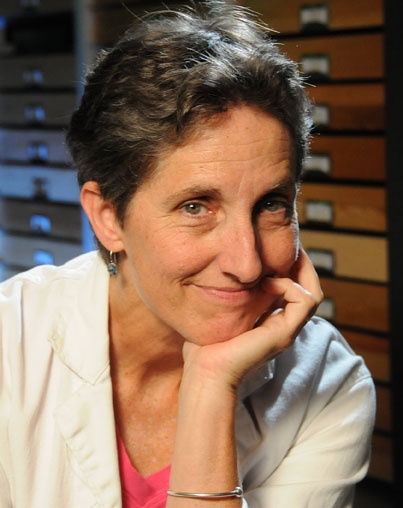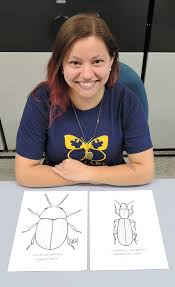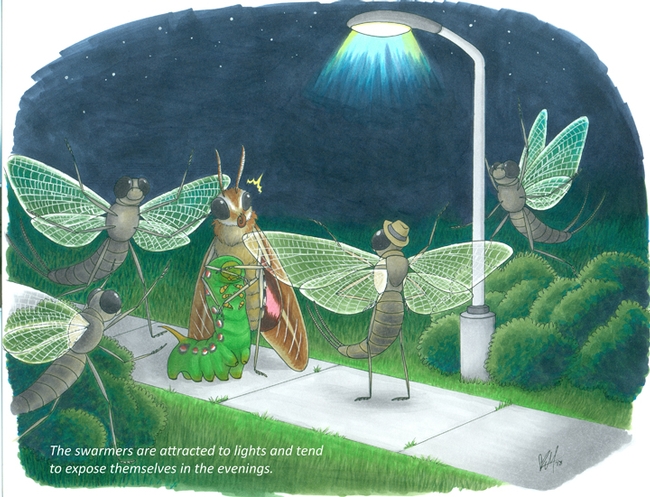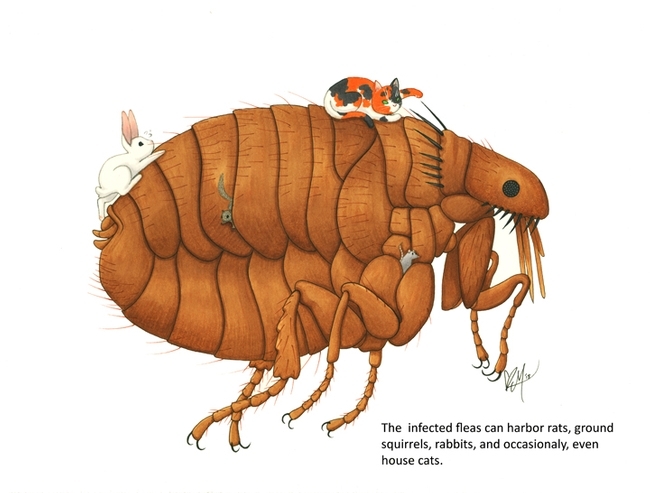
Well, many funny things.
Lynn Kimsey, director of the Bohart Museum of Entomology and professor of entomology at the University of California, Davis, teaches a course on general entomology and you ought to read some of the "facts" that students write about insects.
Now you can.
Kimsey just authored an article, "Entomological Musings in the Classroom," in the current edition of American Entomologist that details the unusual, puzzling and entertaining things students have penned about insects.
"One of the outcomes of teaching a general entomology course to undergraduates for many, many years is that I have taken on a new appreciation for science fiction and fantasy," Kimsey begins. "This happens, in part, because every year, a student makes some new scientific discovery about an insect that causes me to slap my forehead and say 'They do what!?' The other part is how little students (or the public in general) know about insects, in contrast to how much they think they know. Most of my students are not entomology majors, and many aren't even majors in the biological sciences, so there are a lot of misconceptions. Nonetheless, there is huge entertainment in enlightenment."
For the article, Kimsey divides choice sentences into categories, including social insects, agricultural pests, mosquitoes and medical entomology, aquatic insects, butterflies and "sundry."
A few examples:
Social Insects:
- Honeybees were able to find their way home by navigating around the sun.
- Because the males in the Hymenoptera social structure do no work, they are considered a waste of the colony's energy, and as such, they are only laid when the colony can stand the strain.

- Normally, locusts are introverted creatures; they do not socialize unless it is for reproduction.
Mosquitoes and Medical Entomology:
- 300,000 to 500,000 new cases [of malaria] occur annually, of which 2.7 million are fatal.
- Aerial spraying should be done as a last resort since this leads to mosquito resistance, affects American lobsters and human health.
- The infected fleas can harbor rats, ground squirrels, rabbits, and occasionally, even house cats.
Aquatic Insects:
- Water bodies are usually slow moving and narrow so that they may burrow, crawl along the bottom and climb vegetation.
Butterflies:
- Although caterpillars are vulnerable and young, their ability to protect against predators has helped them become successful predators.
Sundry:
- Fleas do not “jump” like mammals do; fleas charge their elasticated legs with tensity, like a drawn bowstring, then shoot themselves through air.
- Some West African tribes are known to be very fond of certain insects, although sometimes more with the children.
Kimsey concluded: "I can't wait for next year to learn more about new things that insects do and how they do them. Through all of this, I'm hoping to create the next generation of entomologists, while teaching them how to write and continuing to collect more wonderful sentences."
Some of the statements found their way into the 2019 Bohart Museum of Entomology calendar, illustrated by talented graphic artist and undergraduate entomology student, Karissa Merritt.
As for the American Entomologist, it's a publication of the 7000-member Entomological Society of America (ESA), the world's largest entomological organization.
Kimsey, who received both her undergraduate degree (1975) and her doctorate (1979) from UC Davis, joined the entomology faculty in 1989. The director of the Bohart Museum and executive director of the Bohart Museum Society since 1990, she has also served as interim chair and vice chair of the UC Davis Department of Entomology, now the UC Davis Department of Entomology and Nematology.
Kimsey won the UC Davis Academic Senate's Distinguished Scholarly Public Service Award in 2016. The annual award recognizes a faculty member's significant public service contributions that benefit the local, regional, national, and/or international community. She twice served as president of the International Society of Hymenopterists, and is a former board member of the Natural Science Collections Alliance. She is active in ESA and the Washington Entomological Society. The Pacific Branch of ESA (PBESA) honored her and colleagues Eric Mussen, Robbin Thorp, Neal Williams and Brian Johnson—“the UC Davis Bee Team”--with the outstanding team award in 2013. Kimsey also received the PBESA Systematics, Evolution and Biodiversity Award in 2014.
Meanwhile, read the American Entomologist article.
However, at the end of the day, a pit-building antlion is a fat sack of poop that lies motionless at the bottom of a hole waiting for food to fall directly into its jaws, and that's a lifestyle I fully endorse.
It does WHAT?
Attached Images:

"The swarmers are attracted to lights and tend to expose themselves in the evenings." Sentence by one of Lynn Kimsey's students; illustration by UC Davis graphic artist/entomology student Karissa Merritt.

"The infected fleas can harbor rats, ground squirrels, rabbits, and occasionally, even house cats." Sentence by one of Lynn Kimsey's students; illustration by UC Davis graphic artist/entomology student Karissa Merritt.